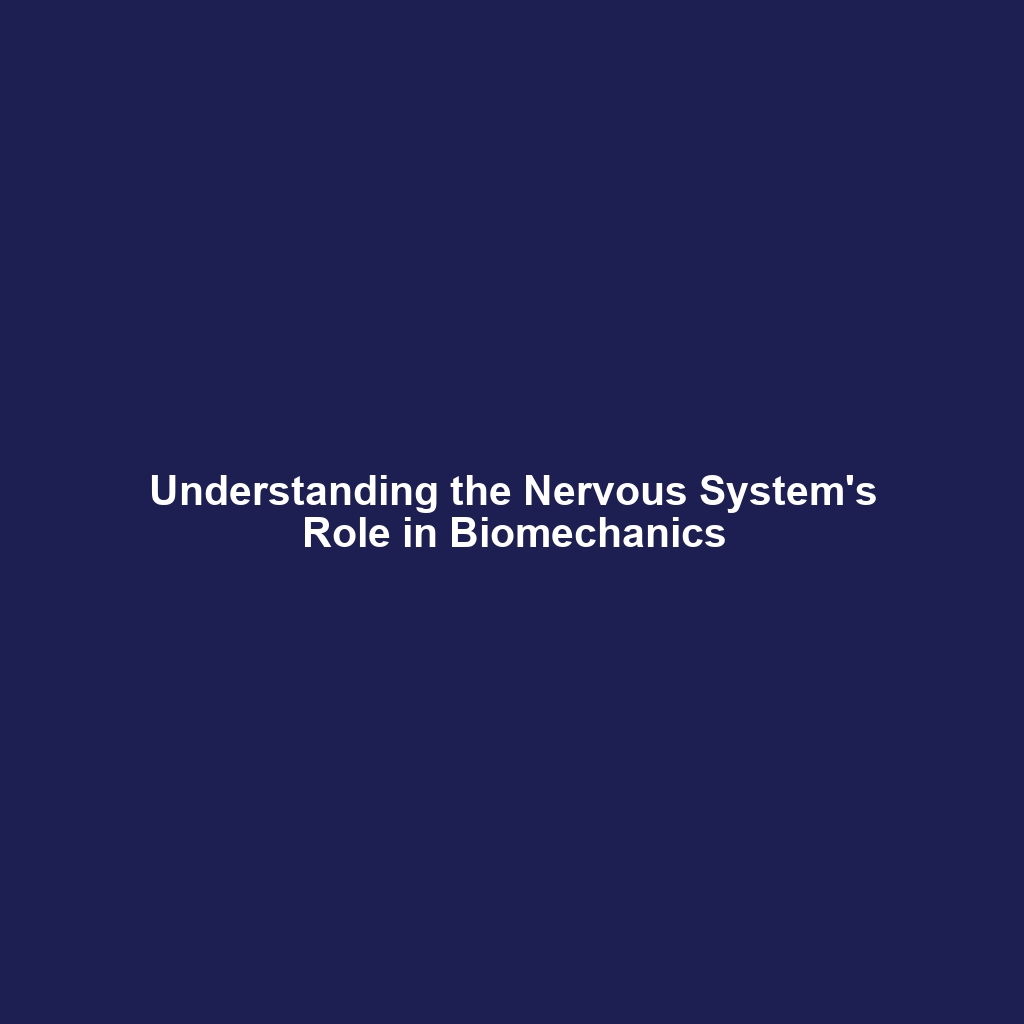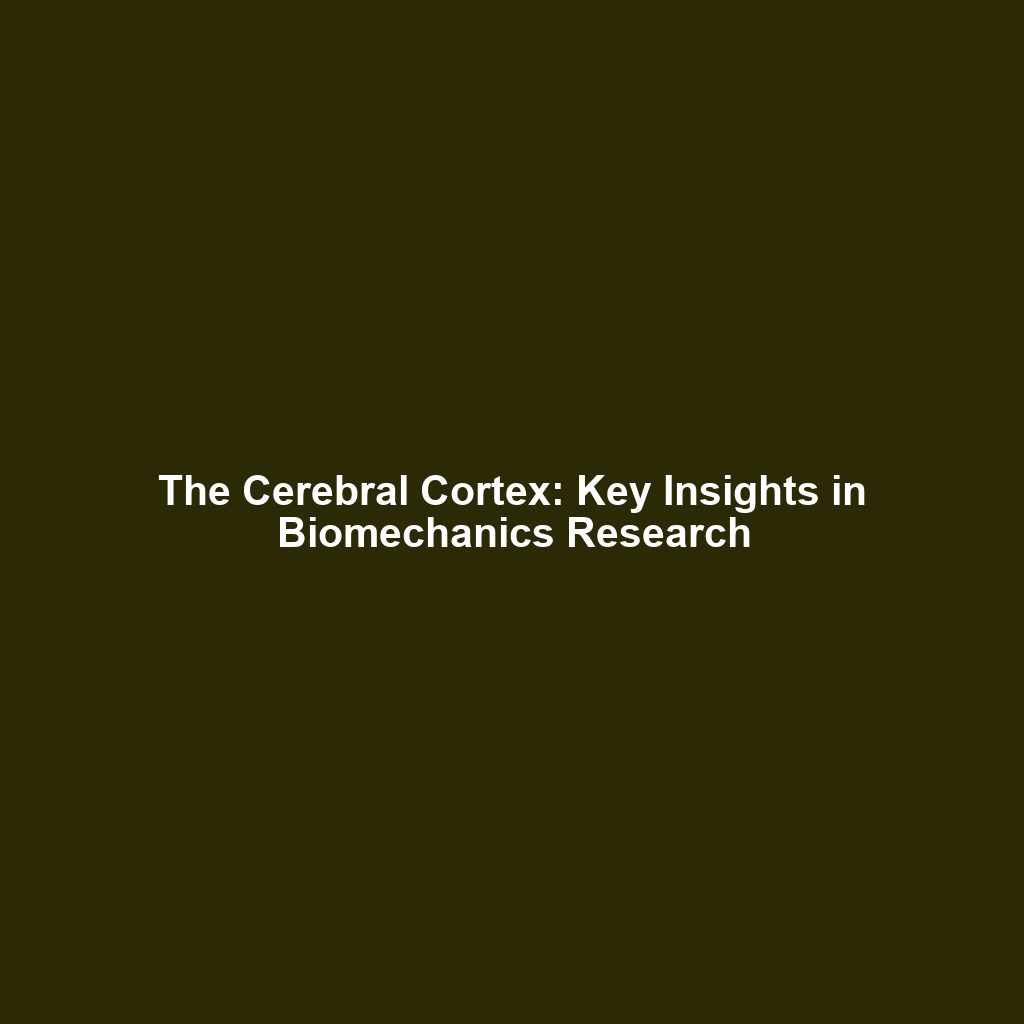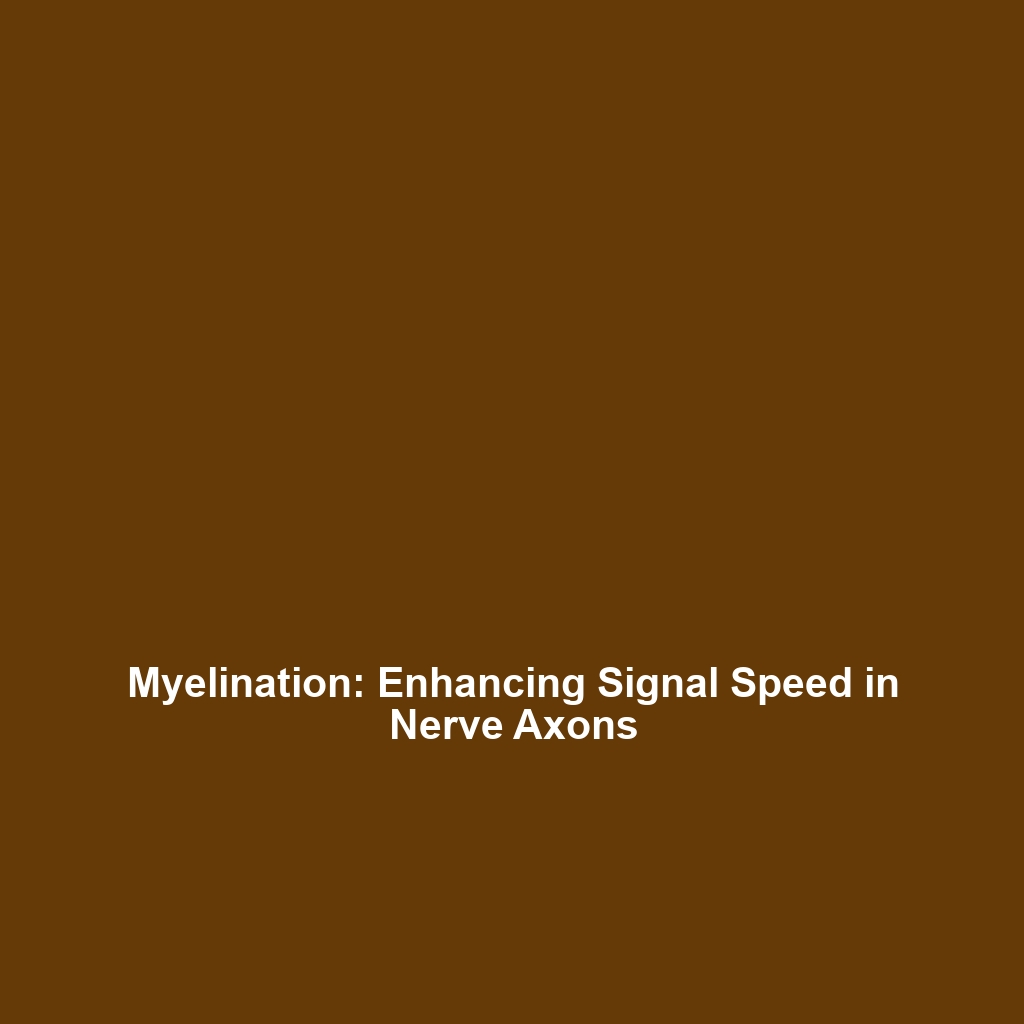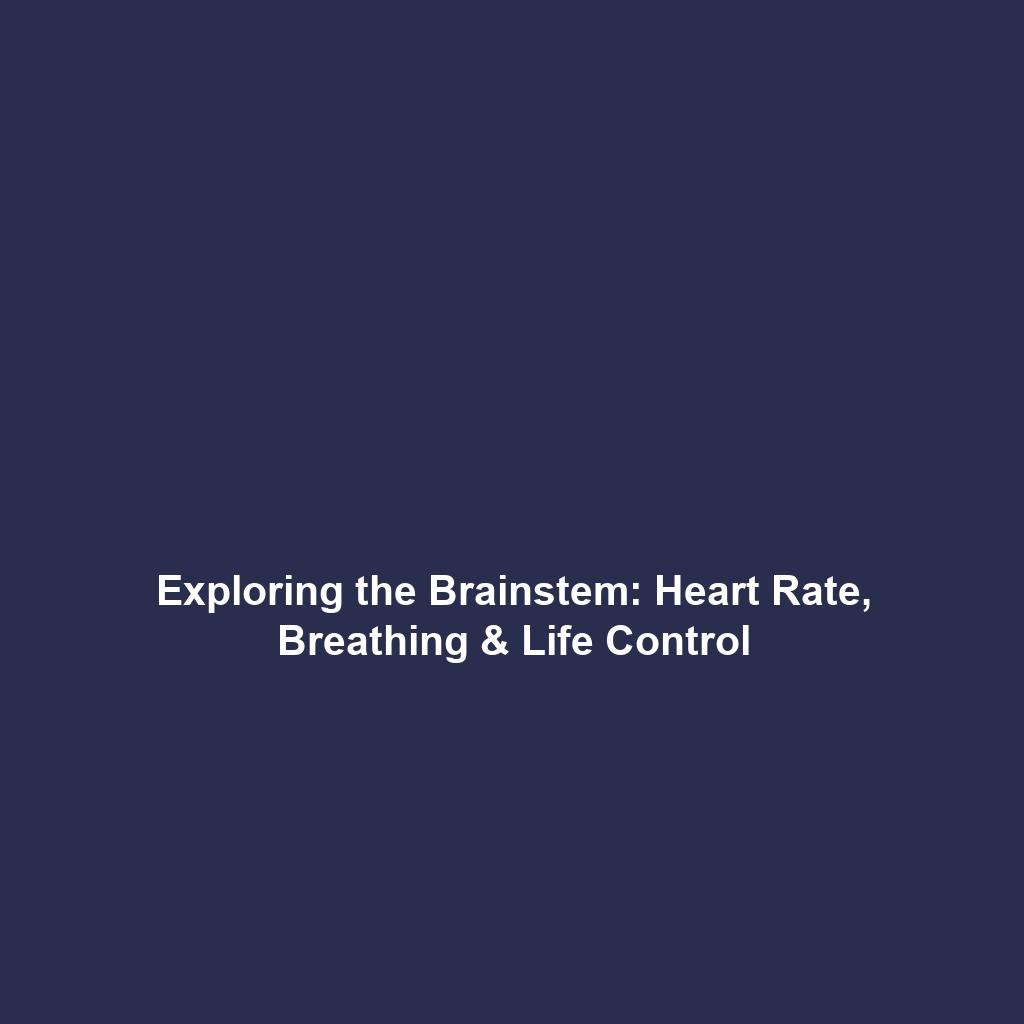The Nervous System: A Key Component of Biomechanics
The Nervous System is a complex network that plays a pivotal role in coordinating movements and responses within the field of Biomechanics. Understanding the intricate mechanisms of the nervous system enhances our knowledge of how biological systems operate during movement. In the context of biomechanics, the nervous system facilitates communication between the brain, spinal cord, and peripheral nerves, influencing motor control and physical performance. By examining the interaction between these systems, we can uncover vital insights into human motion, injury prevention, and rehabilitation.
Key Concepts of the Nervous System
The nervous system comprises several essential components and principles, which are crucial for studying biomechanics:
1. Structure and Function
The nervous system is divided into the central nervous system (CNS), which includes the brain and spinal cord, and the peripheral nervous system (PNS), which connects the CNS to limbs and organs. This division ensures efficient communication and control over bodily movements.
2. Motor Control
Motor control refers to the process by which the nervous system coordinates muscle movements through the transmission of signals. Understanding this process is fundamental to biomechanics as it governs how forces are generated and applied during physical activity.
3. Neuroplasticity
Neuroplasticity describes the nervous system’s ability to reorganize itself by forming new neural connections. This concept is significant in biomechanics, particularly in rehabilitation and training approaches that aim to improve motor function following injury.
Applications and Real-World Uses of the Nervous System in Biomechanics
The intersection of the nervous system and biomechanics has yielded numerous practical applications:
- Rehabilitation Engineering: Neuromuscular training programs utilize the principles of the nervous system to design effective rehabilitation protocols for patients recovering from injuries.
- Sports Performance: Coaches and trainers apply biomechanics to enhance athletic performance by understanding how the nervous system controls muscle coordination and timing.
- Assistive Technologies: Developments in prosthetics and exoskeletons leverage knowledge of the nervous system to create devices that respond to neural signals, improving mobility for individuals with disabilities.
Current Challenges in Studying the Nervous System within Biomechanics
Despite advances in research, several challenges persist in studying the nervous system, including:
- Complexity of Neural Pathways: The intricate connections within the nervous system make it challenging to isolate specific functions and responses associated with biomechanics.
- Variability in Response: Individual differences in neural responses can affect the applicability of biomechanical principles across varied populations.
- Technological Limitations: Current technologies may not fully capture the complexities of real-time neural and muscular interactions during movement.
Future Research and Innovations
Research on the nervous system is poised for significant innovations that will impact biomechanics:
- Brain-Computer Interfaces: Advancements in these technologies could enable direct communication between the brain and external devices, opening new avenues for rehabilitation.
- Wearable Technology: Future developments in wearables will allow for better monitoring of neurological responses during physical activity.
- Regenerative Medicine: Research into neuroregeneration may lead to breakthroughs in restoring movement and function following spinal cord injuries.
Conclusion
The nervous system is integral to the field of biomechanics, influencing everything from motor control to rehabilitation strategies. Understanding its complexities facilitates improved physical performance and recovery from injuries. As research evolves, we anticipate further innovations that will enhance our understanding and application of biomechanical principles in conjunction with neural function. For more information about biomechanics and its applications, visit our related topics page.
This article provides a structured, SEO-optimized overview of the nervous system’s significance in biomechanics, emphasizing relevant keywords and incorporating practical information for readers.



